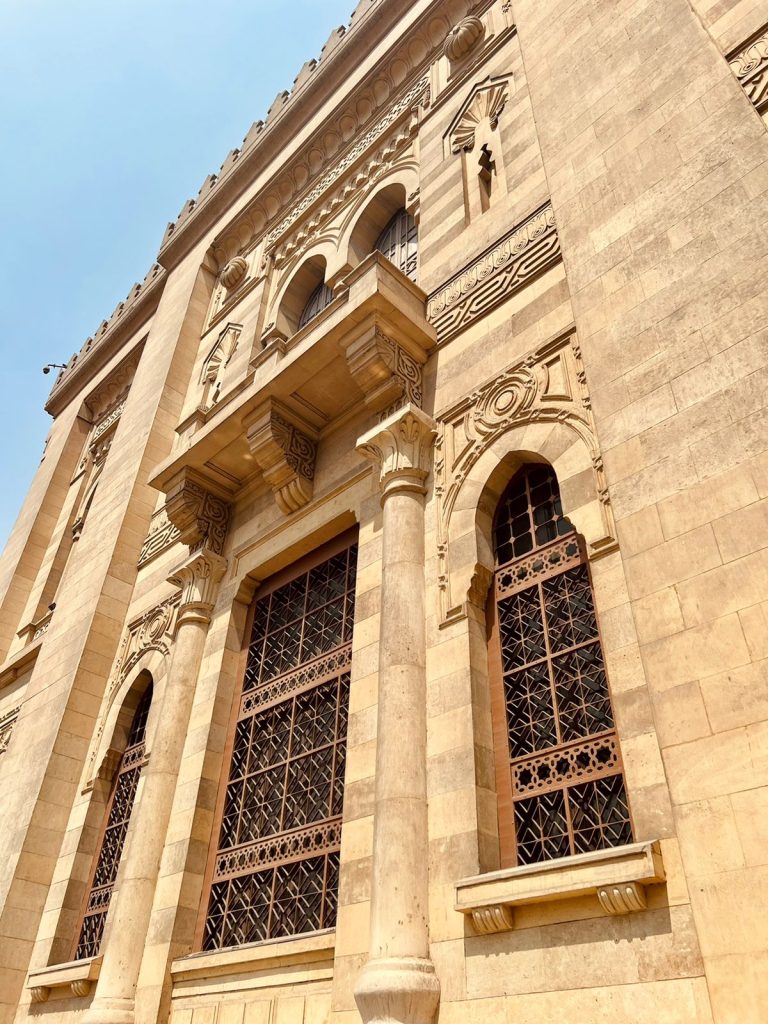The Museum of Islamic Art, formerly known as the “House of Arab Antiquities,” is one of the world’s greatest museums, with its exceptional collection of rare woodwork and plaster artefacts, metal, ceramic, glass, crystal, and textile objects from all periods, from all over the world. It is located in Port Said, Ghayt Al Adah, El-Darb El-Ahmar, Cairo.
I made my way to the museum purchasing my 20 Egyptian Pound admittance ticket. Entering the museum was overwhelmed with ancient artefacts from all corners and made my way around the separated sections based on the Islamic era and the field.
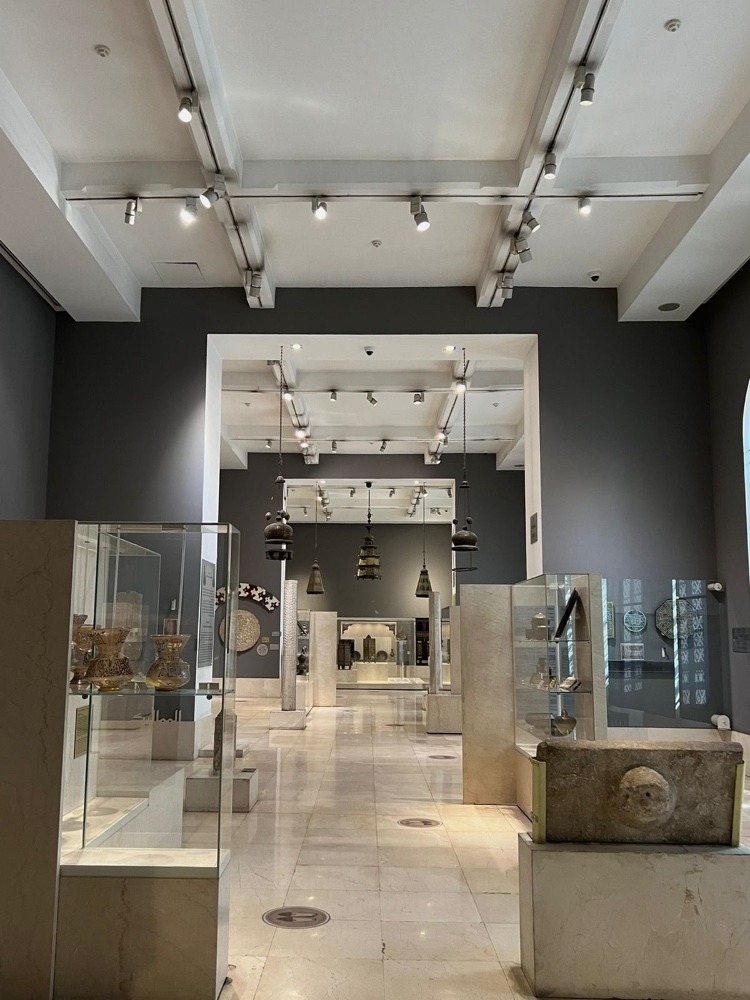
Calligraphy was a prominent element of the Islamic ages, and those two sections of ceramic tiles have white Arabic writings on them, “there is no god except the almighty God,” reads the top two. They date from the 8th AH / 14th AD Egyptian Mamluk era. The second lower one is from the 10th AH / 16th AD and reads, “there is no honor higher than Islam.” The blue template employed, as well as the utilization of leaf trees, is to create wonderful ceramic tiles, making it aesthetically pleasing.
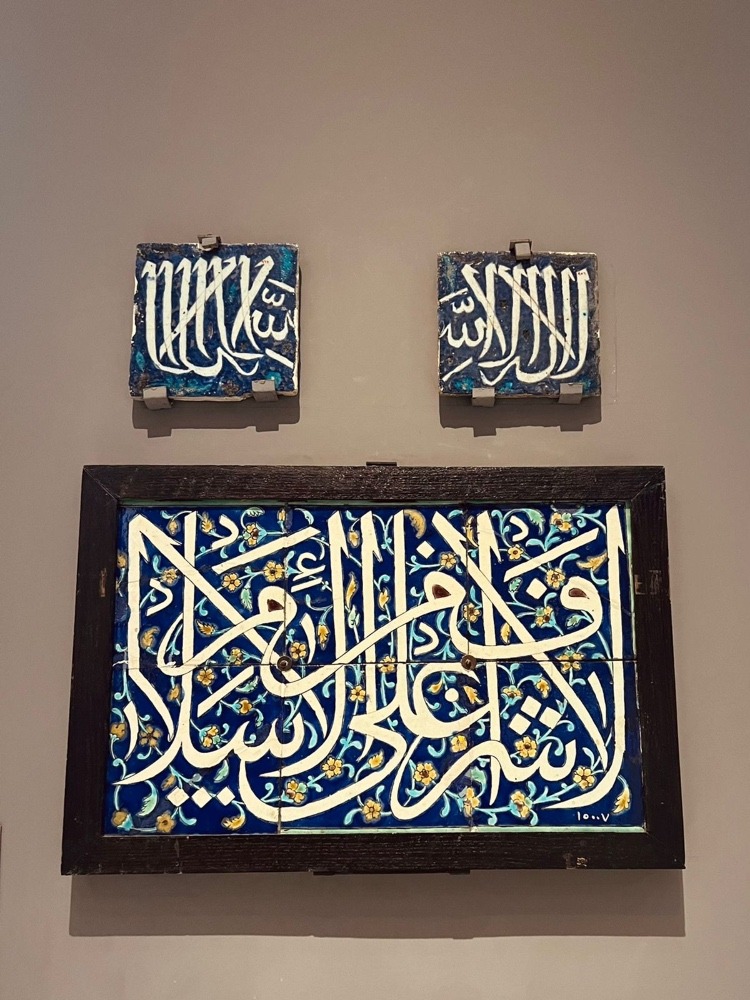
Moving on, coins appear to have been popular during several Islamic eras, including the Fatimids and Umayyads, who created the first Muslim monarchy in Damascus in 661. Interestingly, I spoke with Nabila, the museum’s guide, as she passionately explained that prior to Islam, the Arabs did not appear to have their own currencies, with the exception of a few dirhams from Himyar that were carried from Yemen to Hijaz. The Arabs began to utilize Byzantine dinars as a result.
Abd al-Malik Ibn Marwan, the Umayyad caliph, created genuine Islamic coins with distinguished Arabic writing throughout his reign. One of his most well-known accomplishments was the Arabization of the Divans. Consequently, coins were one of the symbols of Islamic sovereignty, as they frequently bore the ruler’s name, as well as the minting location and date. They also represented some of the current political, religious, and social conventions.
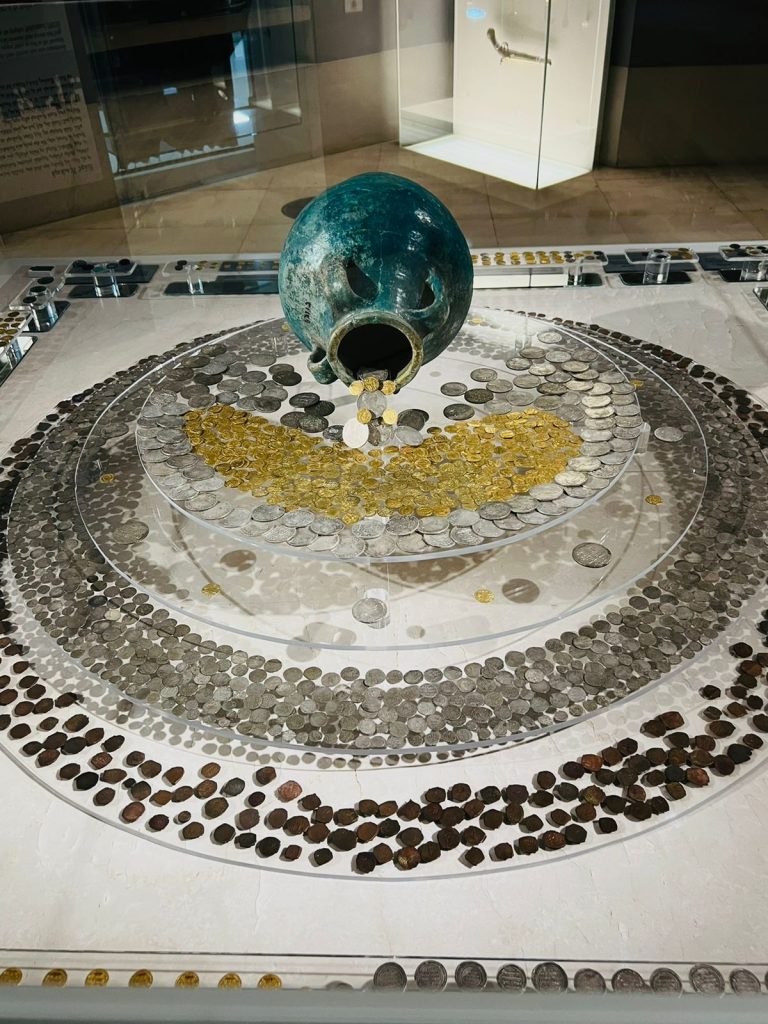
Moving on to carpets, which have become an important part of Arab identity showing intricate shapes and vivid colors. This woodpile and cotton Iranian carpet shown below demonstrates how Iran dominated the carpet manufacturing sector throughout the Islamic eras. Planet ornaments and lotus flowers adorn the carpet, which dates back to the Ottoman Empire when geometrical and floral themes were emphasized.
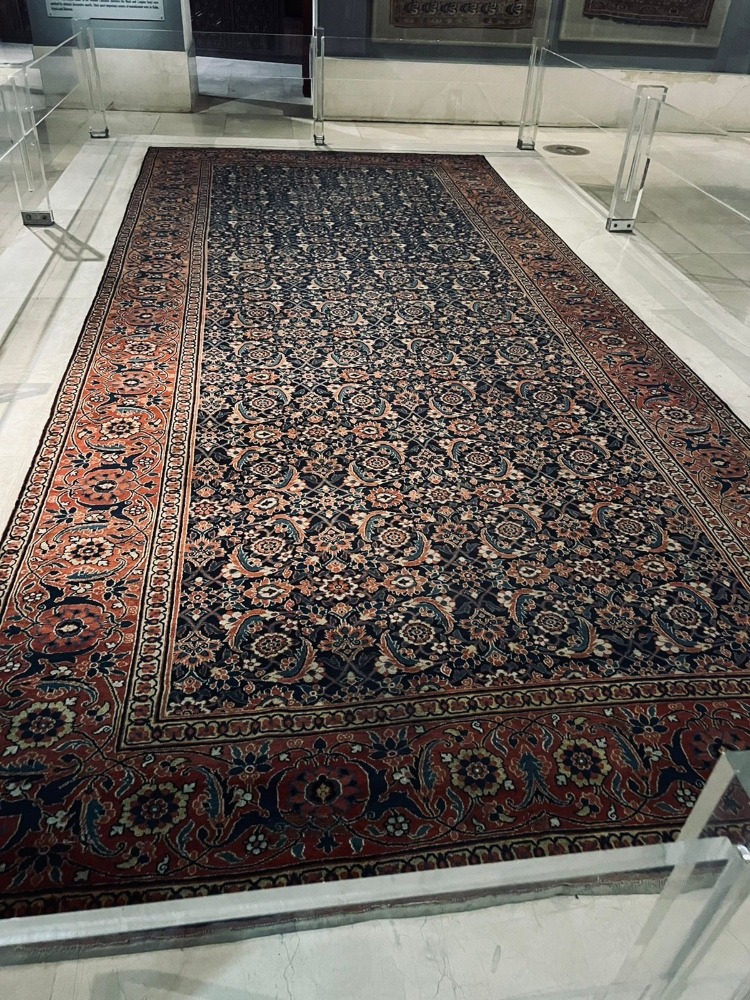
In the below picture the ten squares of beautiful ceramic tiles with a clear finish was assembled to form a mihrab (an indicator for the direction of prayer). This masterpiece was most likely created by potters in the neighborhood of Kallaline, a suburb of Tunis, around the 2nd century AH / 18th AD. An octagonal building with a dome is depicted in the artwork. The nature of the structure was interpreted differently by various people. Others saw the Dome of the Rock in Al-Quds Al-Sharif, while others saw the Prophet’s mosque in Medina. Also, the representation of the shape of the feet on ceramic tiles appeared in abundance in the drawings of Islamic manuscripts illustrated in the Safavid era, and these feet may refer to the location of the Prophet’s feet on the sacred rock in the Dome of the Rock at the time when he ascended to heaven on the ascension journey.
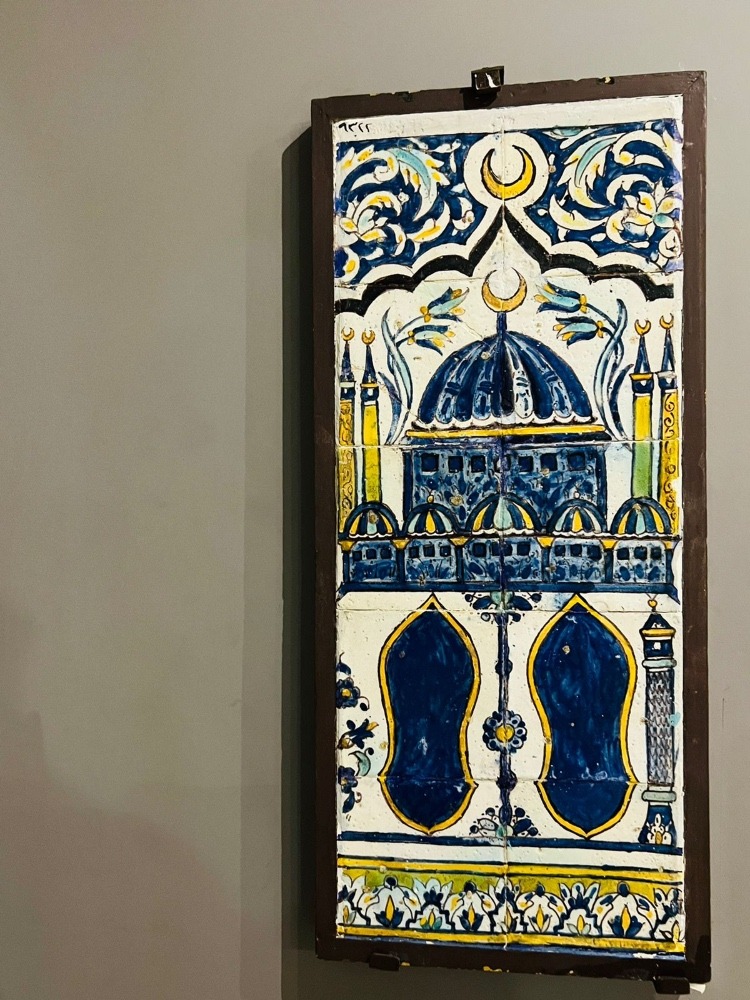
Apart from all of the historic antiques that the museum promotes, the museum’s aesthetics and architecture are noteworthy, and the surrounding flora is magnificent. There are trees and even some cacti that can be found. Also, if you’re a fan of antiques and this glorious age, the museum’s gift shop contains some of the most beautiful décor and Islamic mementos that are perfect for gift giving.
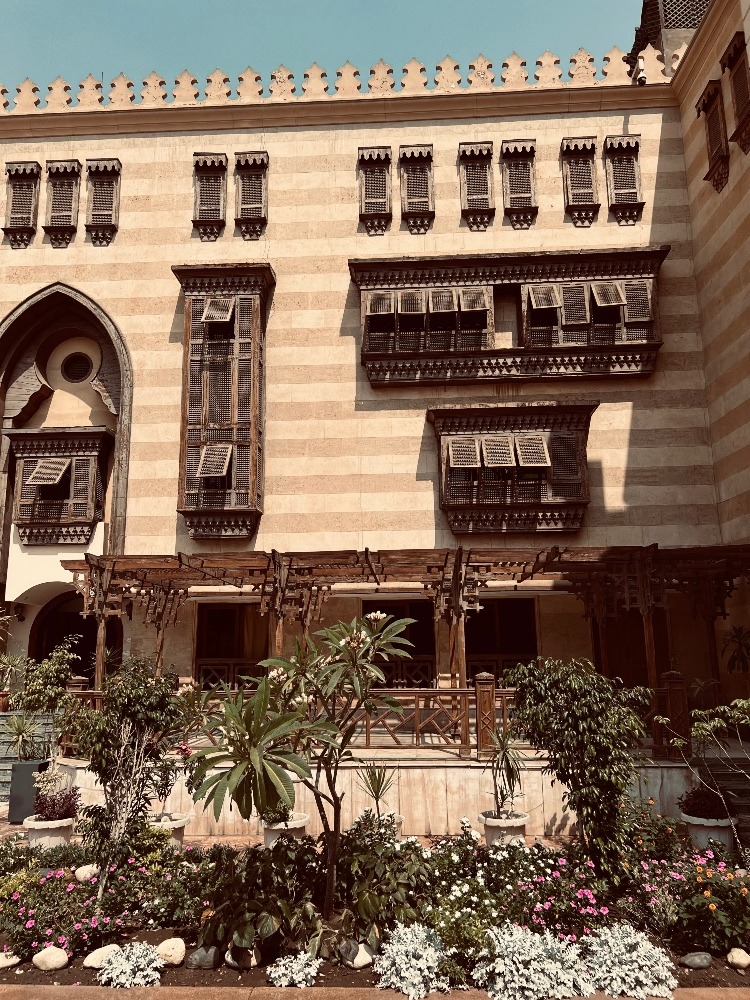
It’s safe to claim now that the museum is the hero of conservation and restoration after such a cultural voyage. It is the first museum dedicated only to Islamic art in the country’s history. So, if you’re thinking about where to go and what museum to see next, the Museum of Islamic Art is unquestionably worth your time, since it houses over 100,000 objects spanning all branches of Islamic art from prominent times of Islamic history.


